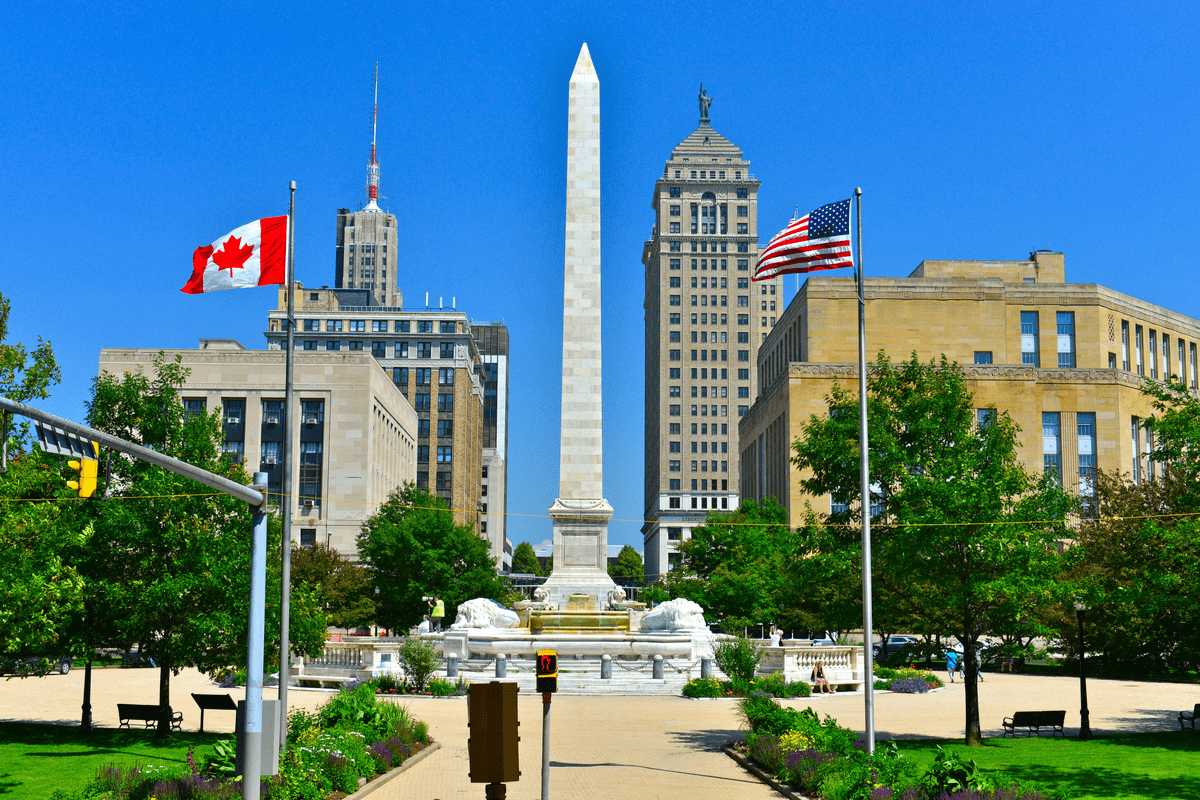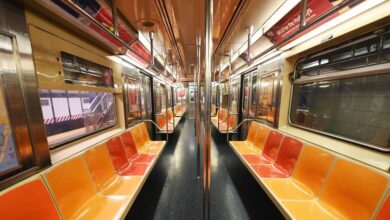The Average Rent in Buffalo

A beautiful city in any season, Buffalo is teeming with renewed life. The renovation of the city’s iconic Canalside, coupled with many new jobs, has brought about a revival for this Rust Belt market town.
Chicken wings (invented here), breweries and an affordable lifestyle make the City of Good Neighbors favorable for everyone. If you’re looking for a new place to feel at home, explore Buffalo.

What’s the average rent in Buffalo?
Recent investments have caused a kind of economic boom in Buffalo. This has resulted in increased demand to live in the city and its surrounding metropolitan area.
Nationally, the average rent has gone down over the past year – this is not the case here. The average rent for a one-bedroom apartment in Buffalo is $ 1,427 (12% below the national average), up 28.78% from a year ago. Some neighborhoods have increased rental prices while others have decreased. There are plenty of options for those who aren’t looking to break the bank.
How much do i need to earn to live in Buffalo?
You will need to cover the costs of living in Buffalo. Experts recommend spending no more than 30% of your pre-tax income on housing. This gives you leeway for other expenses that will arise.
Considering that a one-bedroom apartment will cost you an average of $ 17,124 per year, you would have to earn $ 57,080 to live comfortably in Buffalo. This is a welcome figure for locals, who earn an average of $ 61,000. This leaves room to enjoy the food and attractions that make Buffalo a wonderful destination and home.
Students, professionals and people looking for a change of scenery can certainly find a place in Buffalo. Despite rising rental prices, there are housing options to suit all budgets. There is also an easy way to calculate your ideal budget using our rent calculator.

The cost of living in Buffalo
After you’ve established a realistic budget for your accommodation, it’s time to consider the additional costs associated with living in this neighborhood. There are a lot of things to consider before making a decision.
To get a good idea of how this city compares to others in the country, we can refer to the average cost of common items. Known as the Cost of Living Index, that number is 96.7 in Buffalo. That’s 3.3% below the national average, making Buffalo an affordable place to live.
- Health care: Health care cost in Buffalo is 14.5% lower than national average
- Races: Buffalo cost of groceries 5.8% lower than national average
- Housing: The cost of housing in Buffalo is 5% lower than the national average
- Utilities: Utility cost in Buffalo is 3% lower than national average
- Transport: Transportation cost in Buffalo is 2.1 percent lower than the national average
- Miscellaneous goods and services: The cost of miscellaneous goods and services in Buffalo is 0.3% higher than the national average
The only thing in Buffalo that exceeds the national average are the costs of various goods and services. This paints a picture of an economic city.
Knowing this information will give potential residents an idea of what life in or near the city can be like for their wallet.
The most expensive and cheapest neighborhoods in Buffalo
Buffalo has a fairly large metropolitan area with a variety of unique neighborhoods spread all over. There is a downtown area that is home to a lot of jobs, and a lot of people commute to work.
There is also nine colleges in Buffalo which contribute to a large student body and to numerous student accommodation. Proximity and accessibility play a role in the pricing of housing in particular neighborhoods. Some people in Buffalo use public transportation, although it is more common to find people traveling by car.
Downtown Buffalo will cost a bit more than the north. The West Side of Buffalo has a lot of units available and has been increasing in size for some time now. The east side of Buffalo is a bit more expensive with its proximity to shops and restaurants. This part of town also has waterfront apartments, with plenty of parks and activities nearby.
Overall, the Buffalo area has accommodations for everyone. Units appear often and more and more apartment complexes continue to approach some of the areas in demand.
With the large population of university students, there is a lot of turnover for units near schools. It might be a good idea to keep an eye out for these spots in addition to keeping an eye out for other neighborhoods in Buffalo.

The most expensive neighborhoods in Buffalo
The Grant Ferry ($ 1,556 average) and Joseph Ellicott Historic Preservation District ($ 1,573 average) areas top the list due to their proximity to the restaurants and stores on Elmwood Avenue.
Downtown Buffalo (average $ 1,467) is a bit cheaper. This region has a lot to offer. You can catch a Sabers game at the KeyBank Center or attend concerts and comedy shows throughout the cobblestone downtown. Nearby, Canalside has plenty of offerings, including concerts, dining, and warship tours. In the winter you can find ice skating and enclosed rooftop terraces for dining.
The West Side is a growing neighborhood with many units available for an average of $ 1,401 for a one bedroom unit. The city has made a concerted effort to develop this neighborhood, so it has a lot of potential for new residents. Diversified in its composition, West Side is a hotspot for great food.
* May not be a true representation of the market due to insufficient inventory
Least Expensive Neighborhoods in Buffalo
There are cheaper options in Buffalo, but it may take regular research to find an available spot. The area with the most units available is Forest ($ 1,347 on average). Located right next to the State University of New York College in Buffalo (aka Buffalo State College), this neighborhood offers excellent access to the Elmwood Strip and Delaware Park. It is just around the average price point, but well below the national average.
Starin Central ($ 1,227 on average), next to North Buffalo ($ 1,227 on average), is near the South Buffalo State Campus. Close to a bike path, this neighborhood is a favorite among two-wheeled commuters. The bike path takes you directly to the Niagara River and many other attractions. Rent has gone up at an alarming rate in North Buffalo (28.52% in the past year) – so keep that in mind.
Some of the student accommodation in North Buffalo, Starin Central, and Forest may provide an affordable opportunity, as many landlords do not commit to housing only students. It never hurts to ask!
You can also visit Bryant or Elmwood, which are generally in a good location but don’t have the same access to food and entertainment as other neighborhoods. Instead, the low cost of living in Buffalo coupled with the cheaper rent in these places will save money and live life more affordably.
Average Rental Prices in Buffalo Neighborhoods
There are so many rental options in Buffalo. You can buy a seat for $ 918 in Elmwood or a beautiful apartment overlooking the river at Grant Ferry for $ 1,556. Here are the average prices for each neighborhood.
* May not be a true representation of the market due to insufficient inventory
Find your Buffalo neighborhood
Residents of the Cité des Bons Voisins find so much to do in and around the city. The Buffalo Bills, Niagara Falls, Fort Niagara, and Lake Erie attract people from all over the world. Chicken wings and great culture have led many to call Buffalo their home. You can also.
Simply select the ideal neighborhood for your apartment and start planning your next big move.
Rental prices are based on a moving weighted average of Apartment Guide and Rent.com’s multi-family rental property inventory of one-bedroom apartments. The data was extracted in May 2021 and goes back a year. We use a weighted average formula that more accurately represents the price availability for each individual unit type and reduces the influence of seasonality on rental prices in specific markets.
Neighborhoods with insufficient inventory were excluded.
Data on the cost of living come from the Community and Economic Research Council.
The rent information included in this article is used for illustration purposes only. The data contained in this document does not constitute financial advice or a price guarantee for an apartment.




